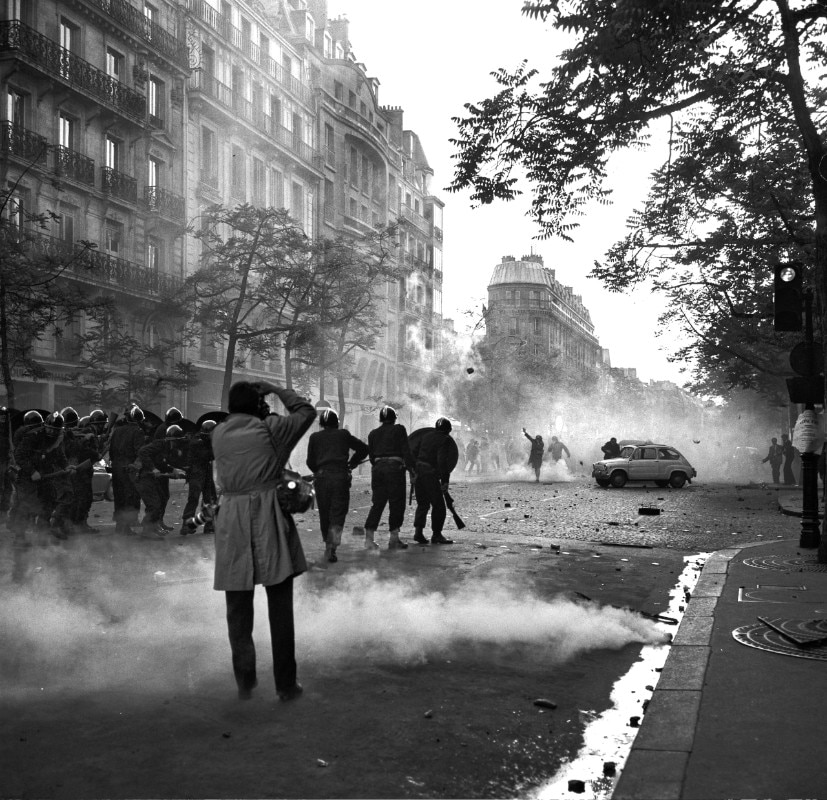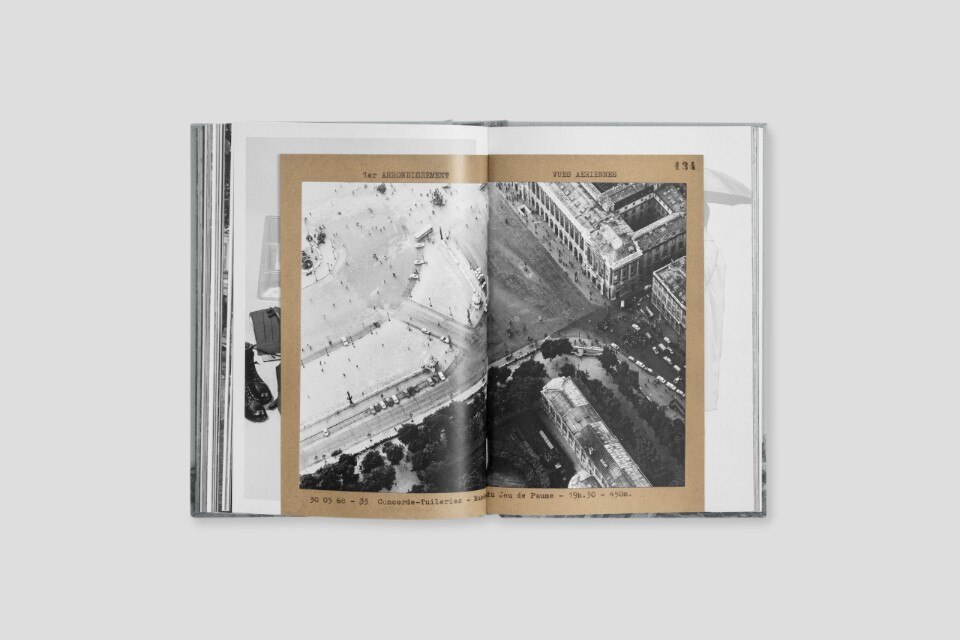May ’68. The most significant movement of social, political, and cultural protest of the 20th century takes on the features of a revolution in Paris. From student parties to workers’ movements, mass demonstrations in the streets multiply, squares fill up, factories empty. The demonstrators block the roads and the passage to the forces of order, and the rebellion against traditional values put in crisis Haussmann’s project of a modern metropolis.

 View gallery
View gallery
The research Taxonomy of The Barricade - Image Acts of Political Authority in Paris, May 1968 (Nero, 2021), an iconographic taxonomy – conceived and realized by Wolfgang Scheppe, professor of political philosophy and director of the Arsenale Institute for the Politics of Representation in Venice – on the campaign of state visual control, through the publication of five hundred unpublished images of the clashes of the Parisian May ’68 from the police archives, is immersed in this dense historical setting.
These random elements of the city assembled in the barricade result in something new, like an expression of resistance that gets in the way of the normal course of things
Among other characteristic typologies of the new authoritarian monitoring campaigns, the events of ’68 marked the historical beginning of the deployment of aerial photography. Using camera-equipped helicopters, the police used the latest available technology in an attempt to get an unobstructed view of any individual and group movement patterns to quell the uprising. Thus, French May also sees the first encounter between this sovereign technology and the barricade’s premodern stratagem of insurrection. “It was the physical presence of the barricades that effectively blocked the flow of the ordinary in the city, mapping the French general strike,” Wolfgang Scheppe tells us. “The barricades signified the real claim to space by those sectors of society that saw themselves excluded from political representation, but also the prosperity of the post-war economy. Gaining visibility for these marginalized interests coincided with the metaphor and reality of the barricade.”

Cobblestones, chairs, bicycles, garbage cans, barricades, cars, signs: the protesters knew how to use everything to redesign the city’s architecture to their advantage, ahead of clashes with the police. “Already the barricades of the Commune of 1871 and its predecessors were already made of the same urban pieces: the pavement, the trellises of the trees of the avenue, the advertising columns,” continues the philosopher. “These random elements of the city assembled in the barricade result in something new, like an expression of resistance that gets in the way of the normal course of things. I am convinced that this single production among the products of human ingenuity, whose composition has at its disposal random and indifferent elements of everyday life that are turned against their purpose, inspired the main method in the revolutionary negation of the avant-garde: collage. And this process is always based on a reversal: the use of construction material of bourgeois society against it.”
The images collected from the Préfecture de Police register here depicts a historically enduring entity that has persisted as a means of subversion on urban land through a period of nearly half a millennium. Thus, the barricade only comes to its end when the process of physical surveillance from a divine perspective is accomplished, with its potential for overview. “What other instrument could have remained unchanged throughout this era without losing its character as a means as its effectiveness waned under the impact of progress? Its modest function of hindering horizontal mobilization, even if only temporarily, loses its power as the movement of its adversary rises vertically above it.”

These elementary urban devices were then gradually resemantized in other functions. While waiting for them to be employed against the forces of order the barricades were transformed by the rebels into backgrounds for so-called portrait props. “I believe that in the episteme of the immediacy of communication of the image-which has taken the place of knowledge mediated by the written text in much of communication-there is the core of every pictorial act, namely the desire to show something. Although always romanticized by the photographic medium, these are deictic acts that are highly effective because of their presumed evidentiary character. If we look, for example, at the U.S. occupation of the Capitol last January, the historical duplicity of the revolutionaries’ self-exhibition confirmed its conceptual core in a way that was as unexpected as it was dramatic. Here, too, the same cause was presumably operative: the rioters believed they had the right and the power of an ongoing historical transition on their side.”
But with technologies characteristic of the 21st century, media, and an ever-increasing overproduction of images, what power does the eye of Leviathan have now? “With the rapid advancement of technically mediated intelligent research into hypertrophic image databases, the eye of Leviathan has grown to a totalitarian and boundless power: nothing escapes the disciplining gaze regime of this god anymore,” Scheppe concludes. “We speak of a qualitative transition, a kind of end of history since the all-seeing state will be able to put an end in this way to any criticism of itself.”

Wolfgang Scheppe, Taxonomy of The Barricade – Image Acts of Political Authority in Paris, May 1968, Nero, 2021
June 12, rue des Saints-Päres
Credits ©Préfecture de Police de Paris

Wolfgang Scheppe, Taxonomy of The Barricade – Image Acts of Political Authority in Paris, May 1968, Nero, 2021
May 6, bd Saint-Germain
Credits ©Préfecture de Police de Paris

Wolfgang Scheppe, Taxonomy of The Barricade – Image Acts of Political Authority in Paris, May 1968, Nero, 2021
May 6, bd Saint-Michel
Credits ©Préfecture de Police de Paris

Wolfgang Scheppe, Taxonomy of The Barricade – Image Acts of Political Authority in Paris, May 1968, Nero, 2021
May 13, Préfecture, rue de Lutäce
Credits ©Préfecture de Police de Paris

Wolfgang Scheppe, Taxonomy of The Barricade – Image Acts of Political Authority in Paris, May 1968, Nero, 2021
May 13, rue Gay-Lussac
Credits ©Préfecture de Police de Paris

Wolfgang Scheppe, Taxonomy of The Barricade – Image Acts of Political Authority in Paris, May 1968, Nero, 2021
May 24, bd Saint-Martin, rue Réaumur
Credits ©Préfecture de Police de Paris

Wolfgang Scheppe, Taxonomy of The Barricade – Image Acts of Political Authority in Paris, May 1968, Nero, 2021
May 30, Place de l'Etoile
Credits ©Préfecture de Police de Paris

Wolfgang Scheppe, Taxonomy of The Barricade – Image Acts of Political Authority in Paris, May 1968, Nero, 2021
May 30, Place de la Concorde
Credits ©Préfecture de Police de Paris






















